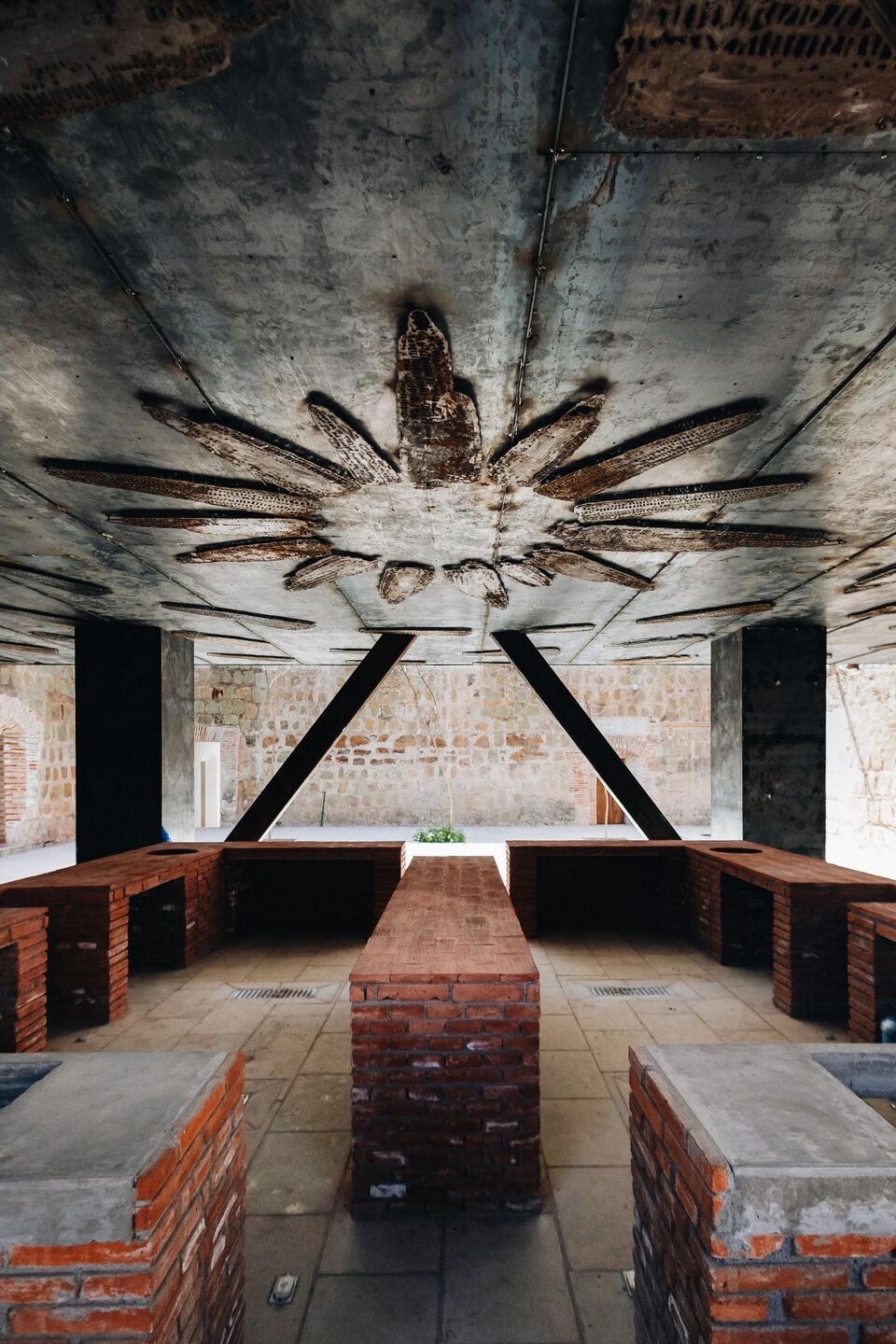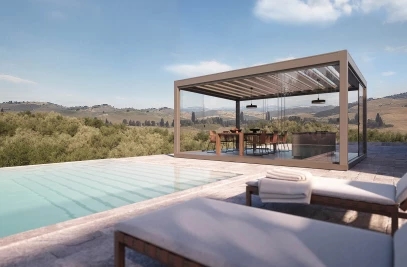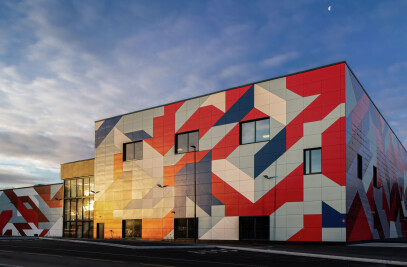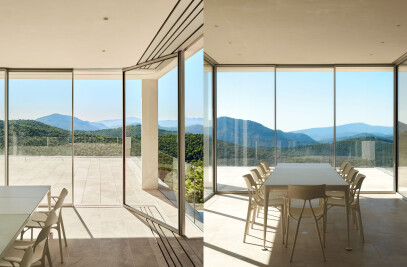In the historic centre of Oaxaca, Mexico, Rootstudio, a Mexico-based architectural laboratory, restores a former viceregal convent of Carmen Alto into a multipurpose gastronomic centre. The heritage recovery project layers the past, present and future of the Oaxacan gastronomic culture to create a contemporary yet timeless educational space.
The design seeks inspiration from the architecture of the existing convent structure, local culinary heritage, and endemic materials to create an enticing sensory experience that combines gastronomic traditions with sustainability.
Rootstudio seamlessly blends tradition and contemporaneity while adhering to the guidelines set by the Oaxaca Department of the National Institute of Anthropology and History (INAH). The project not only strives to safeguard the original characteristics and layout of the structure but also elevates the essence of the evolving Oaxacan gastronomic scene.
The execution of this extensive endeavour involved a dedicated team of over 20 designers and supervisors from the Instituto del Patrimonio Cultural del Estado de Oaxaca (INPAC) and the Instituto Oaxaqueño Constructor de Infraestructura Física Educativa (IOCIFED).
With the primary objective of developing a versatile space that encourages community integration while effortlessly incorporating educational and exhibition areas, the project underwent extensive restoration work to preserve the 16th-century building. Traditional construction techniques and materials such as lime, brick, wood, and green Cantera stone have been employed, preserving the building's physical appearance and architectural layout.
The synthesis conserves the materiality and typology while establishing a harmonious connection between the urban environment and the existing structure. The resulting study centre comprises administrative offices, classrooms, and a public library, alongside commercial and recreational facilities such as a restaurant, kitchen, cocktail and tasting rooms, gallery, cafeteria, multipurpose rooms, auditorium, courtyards, arcade gardens, and retail spaces, all contributing to a vibrant and multifaceted environment.
During the restoration, the original splendour of the building was revived, including walls, ceilings, frescoes, and vaulted ceilings; From the reopening of the walled-up windows to notable discoveries during the process, including an 18th-century sewer, transformed into a space for hosting ancestral mezcal tastings and culinary experiences. Another exciting find was a diagonal window, reminiscent of the one in the convent of the same order in San Ángel Mexico City.
The arcades in the goods handling yard were also restored and repurposed as an outdoor event area. Additionally, the restoration of the former gardens and courtyards belonging to the Order of the Discalced Carmelites recaptured the structure’s original appearance.
To juxtapose the past with the present, RootStudio introduced a contemporary element made of raw steel, which houses industrial kitchens. Furthermore, a two-story pavilion with steel pillars and brick vaults was erected in the parking lot. This pavilion accommodates 12 commercial spaces and a public events hall that offers panoramic views of the San Felipe nature reserve mountains, the Santo Domingo Church, and the Ethnobotanical Garden.
In line with the studio’s holistic approach towards minimizing environmental impact, the project utilizes products with zero carbon emissions and chemical-free solutions like soap and alum-based waterproofing compounds. Additionally, a solar energy system is also installed as a sustainable initiative.
Celebrating local craftsmanship, the interiors of the space feature bespoke furniture using macuil wood, tailored especially by skilled cabinet makers and artisans. Another highlight of the project is the sublime representation of Oaxacan heritage by regional artists Damián Flores and Sabino Guisu, uplifting the visual connections within the structure.
In conclusion, the new gastronomic centre is an ode to the richness of Oaxacan heritage, culture, and culinary traditions. The project's restoration has created a versatile space that beautifully honours the essence of Oaxaca.





































